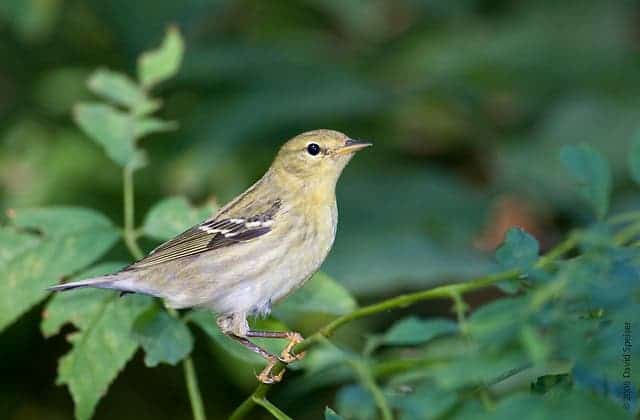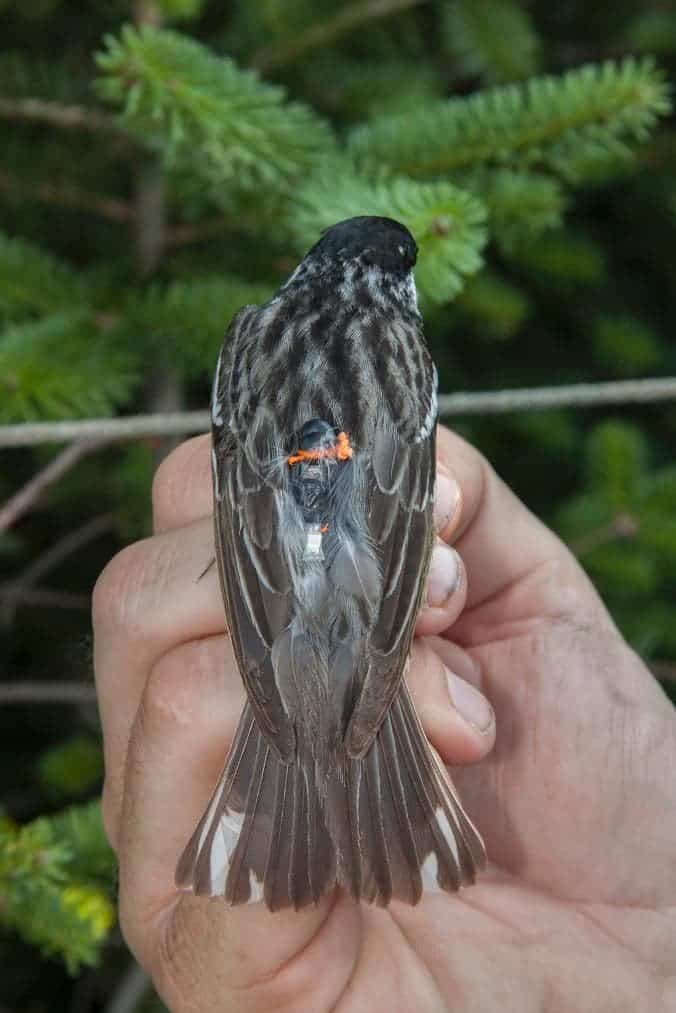More than half a century in question, scientists now confirm that the tiny blackpoll warbler flies nonstop over the North Atlantic Ocean each autumn from New England to South America. The trip takes three days, during which the bird foregoes any rest, sleep or meal. It also absorbs its own intestines.

Researchers have suspected for almost 50 years that the bird, which tips the scale at only half an ounce (three teaspoons of sugar), makes this epic journey without stopping, judging from radar data or sightings of the birds on ships in the Atlantic. But there’s always uncertainty when dealing with a 1,500 long-journey and such a small bird. The mystery was finally solved by a group of ecologists who placed geolocators on 40 birds to uncover their overwater route. The devices showed that the birds flying from their summer homes in Vermont and Nova Scotia flew between 1,410-1,721 miles until they reached Puerto Rico, Cuba and the Greater Antilles islands. This was their stop before continuing to their autumn lodging in northern Venezuela and Colombia, are ported in Biology Letters.

Now ultra-long flights aren’t unheard of. Albatrosses, sandpipers and gulls are famous in this respect, but what sets the blackpoll warbler apart is its size. Where does such a tiny thing gets all of its energy? For one, the birds excellently time their flights to correspond with wind patterns. To survive, however, the bird also undergoes physiologically changes. According to Bill Deluca, an ecologist at the University of Massachusetts, Amherst, the birds fatten up before their trip, growing to roughly 0.6 ounces, from 0.4. Some birds grow to 0.8. “Basically, they’re these little meatballs with wings,” he says. Then, the birds absorb the internal organs they don’t need for the trip, like the intestines, to reduce load and free energy.
“For small songbirds, we are only just now beginning to understand the migratory routes that connect temperate breeding grounds to tropical wintering areas,” said Bill DeLuca at the University of Massachusetts Amherst.
“We’re really excited to report that this is one of the longest non-stop overwater flights ever recorded for a songbird, and finally confirms what has long been believed to be one of the most extraordinary migratory feats on the planet.”
The researchers were less interested in solving a Guiness Book mystery than they were intend on tracing the decline of blackpoll populations. The songbirds are among the most common and can be found throughout North America, yet they’ve greatly declines in numbers in recent years. Researchers aren’t sure why, but these tracking efforts serve to guide them. For instance, it could help establish whether there’s a problem in North America or South America. It could very well be something on the return-trip, which goes on an alternate route. The return flight home is made over land, not over water. This more dangerous since they encounter more predators or man-made perils like high speed cars. Scientists aren’t sure why the return trip isn’t made overseas, but it might the remnant of an ancient migratory path.


